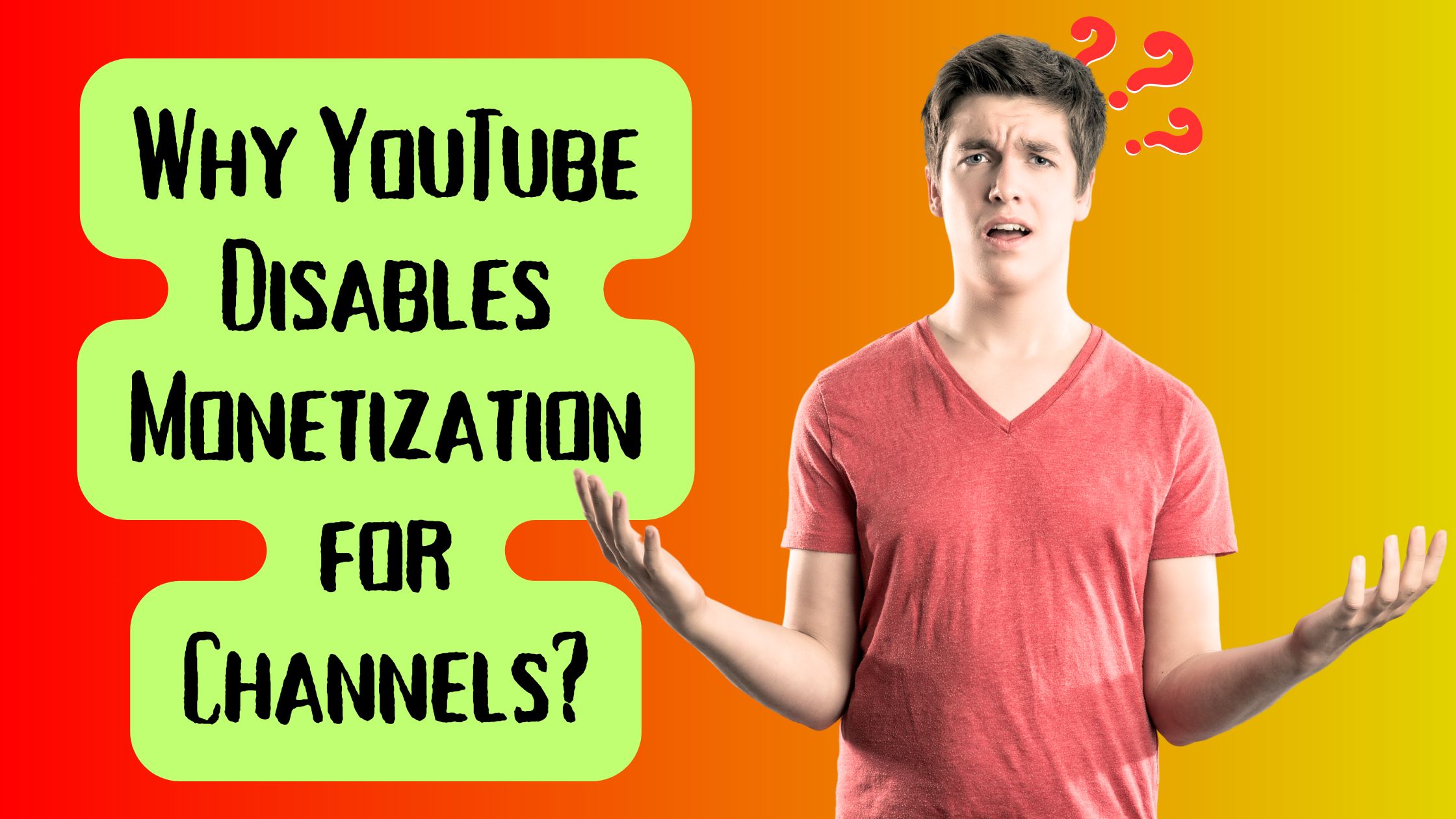YouTube is one of the most popular platforms for content creators to earn money from their videos. Especially, If you are a content creator on YouTube, you may have experienced your monetization being disabled at some point. This can be a frustrating and confusing situation, as it means that you are no longer able to earn revenue from your videos.
However, sometimes YouTube may disable monetization for a channel due to various reasons. In this blog post, we will explain why YouTube disables monetization, how the process works, and how to recover from it.
Why YouTube Disables Monetization?
YouTube has a set of policies and guidelines that all content creators must follow in order to monetize their videos. These include:
- Community Guidelines: These are the rules that ensure YouTube is a safe and respectful place for everyone. They cover topics such as hate speech, harassment, violence, nudity, spam, and more.
- Advertiser-Friendly Guidelines: These are the standards that determine whether a video is suitable for ads or not. They cover topics such as inappropriate language, controversial issues, adult content, harmful or dangerous acts, and more.
- YouTube Partner Program Policies: These are the requirements that a channel must meet in order to join and remain in the YouTube Partner Program (YPP), which enables monetization. They include having at least 1,000 subscribers and 4,000 watch hours in the past 12 months, or 10M valid Public short Views in the past 90 Days following all YouTube policies and guidelines, having an AdSense account linked to the channel, and more.
Reasons for Disabling Monetization on YouTube
There are several reasons why YouTube may disable monetization for a channel, including:
- Violation of Community Guidelines: If your videos contain content that violates YouTube’s community guidelines, such as hate speech, nudity, or violent or graphic content, your monetization may be disabled.
- Copyright Infringement: If your videos contain copyrighted content without permission, your monetization may be disabled. This includes music, images, and other forms of media.
- Clickbait or Misleading Titles and Thumbnails: If your videos have misleading titles or thumbnails that do not accurately reflect the content, your monetization may be disabled.
- Repeated Strikes: If your channel has multiple strikes for violating YouTube’s policies, your monetization may be disabled. These strikes can be issued for various reasons, including copyright infringement, community guideline violations, and more.
If a channel violates any of these policies or guidelines, YouTube may disable monetization for the channel as a penalty. Depending on the severity and frequency of the violation, this may be temporary or permanent.
Process of Disabling Monetization on YouTube
YouTube has a strict policy when it comes to disabling monetization. When a channel violates YouTube’s policies, it may receive a strike or a warning. If a channel receives three strikes within 90 days, its monetization will be permanently disabled.
However, YouTube may also disable monetization without a strike if they detect any violation of their policies, including the reasons mentioned above.
In such cases, the content creator will receive a notification informing them of the violation and the steps they need to take to address the issue.
YouTube will notify the channel owner of the action taken and the reason for it via email and in the YouTube Studio dashboard. The channel owner can appeal the decision if they believe it was a mistake or they have resolved the issue.
How to Recover from It?
Suppose a channel’s monetization is disabled due to a policy violation. In that case, there are some steps that the channel owner can take to try to recover from it:
- Review the policies and guidelines: The channel owner should carefully review the policies and guidelines that apply to their channel and understand what caused the violation. They should also check their email and YouTube Studio dashboard for any specific feedback from YouTube.
- Fix the issue: The channel owner should take action to fix the issue that caused the violation. This may involve deleting or editing videos that violate the policies or guidelines, changing their content strategy or style, or taking other measures to comply with YouTube’s standards.
- Appeal the decision: If the channel owner believes that their channel was wrongly penalized or they have fixed the issue, they can appeal the decision by following the instructions in their email or YouTube Studio dashboard. They should provide evidence and explanation to support their appeal. YouTube will review their appeal and either reinstate their monetization or uphold their decision.
- Reapply for YPP: If a channel’s monetization is suspended due to not meeting the YPP requirements, such as having insufficient subscribers or watch hours, they can reapply for YPP once they meet those requirements again. They should also make sure that their channel follows all other policies and guidelines before reapplying.
Conclusion
YouTube disables monetization for channels that violate its policies and guidelines in order to maintain a safe and respectful platform for everyone. However, this does not mean that a channel’s monetization is gone forever. By following the steps above, a channel owner can try to recover from it and resume earning money from their videos.
